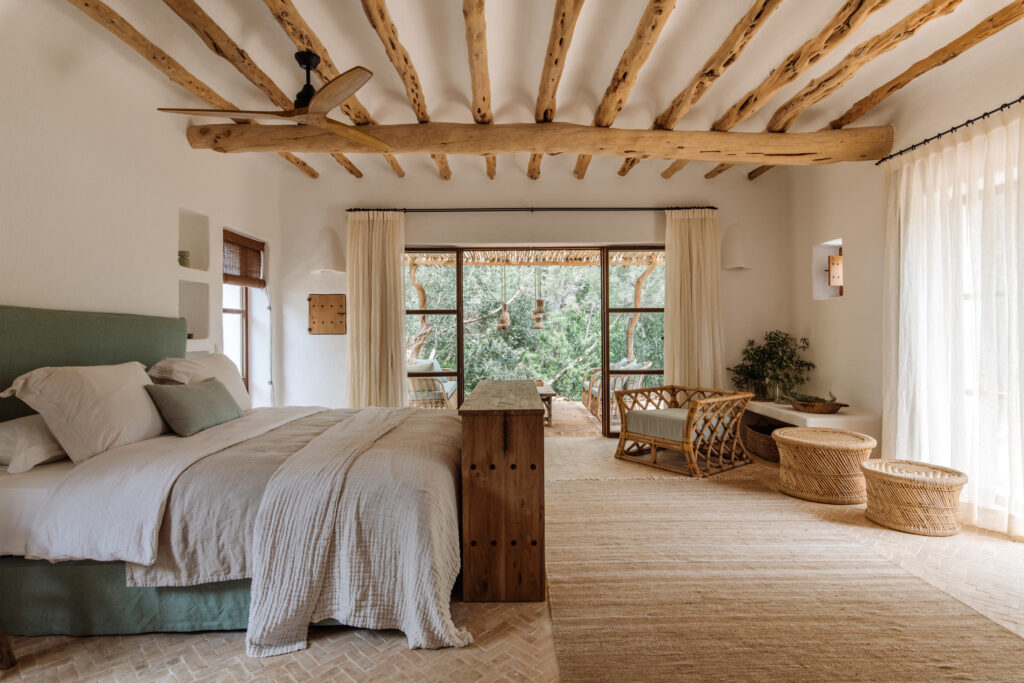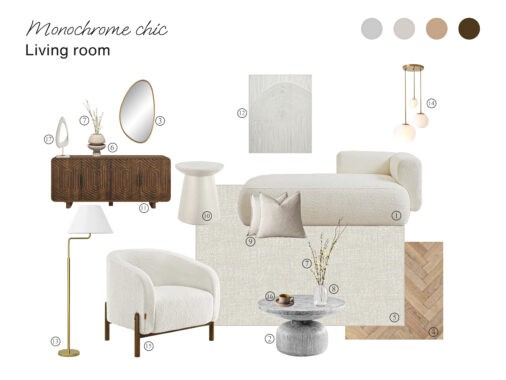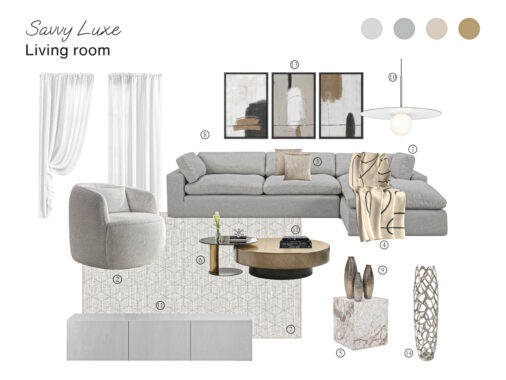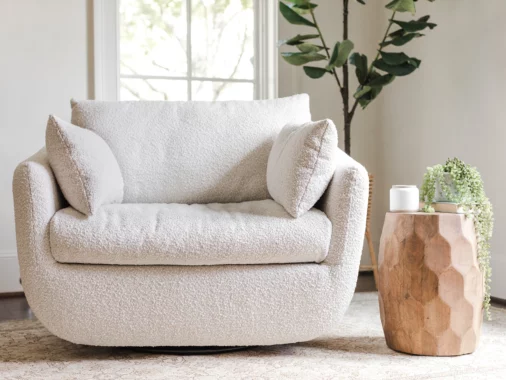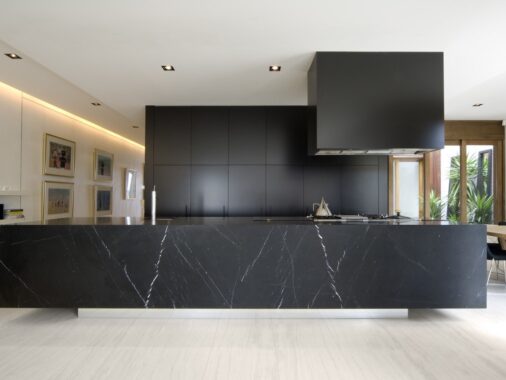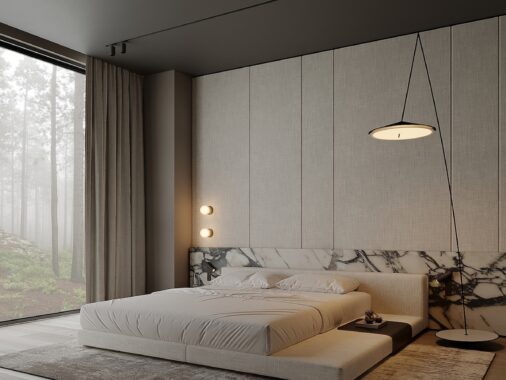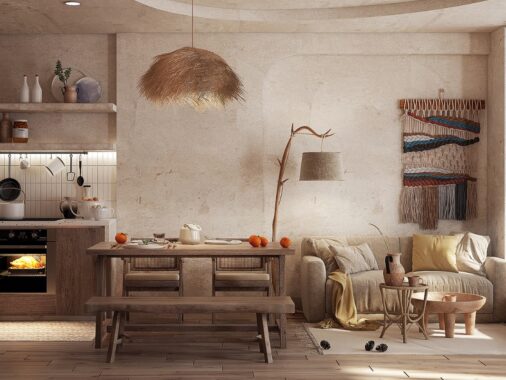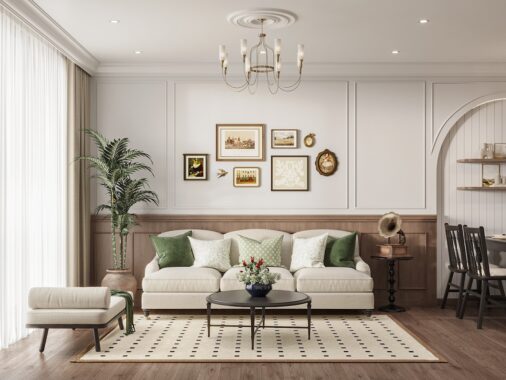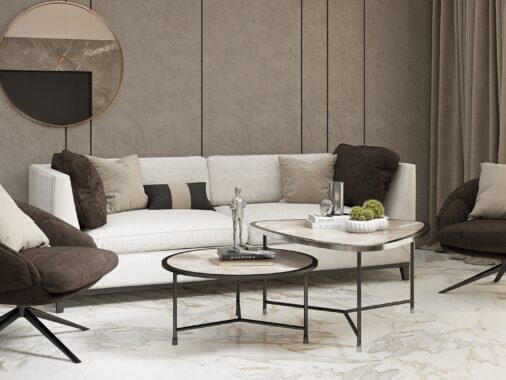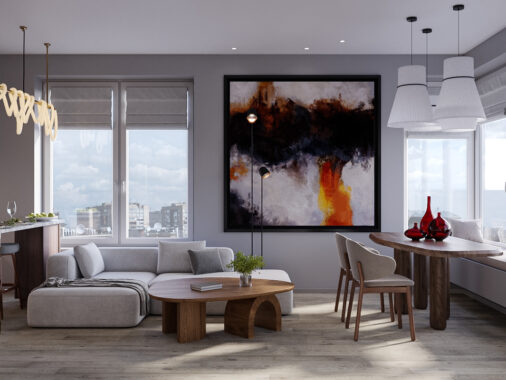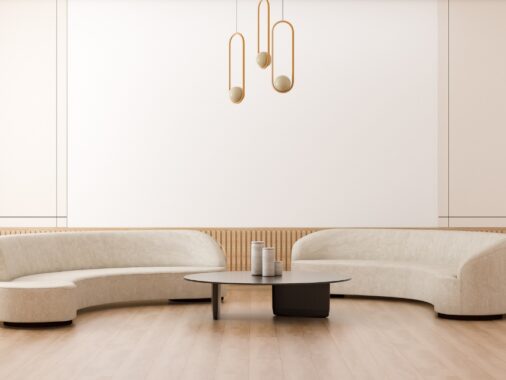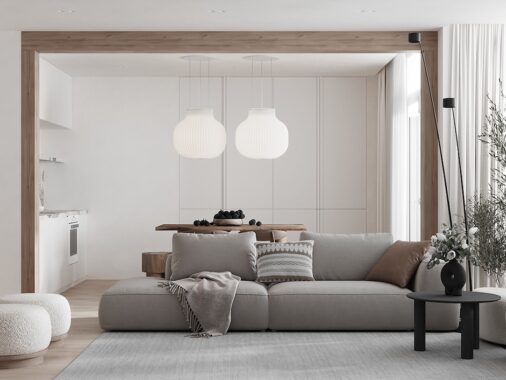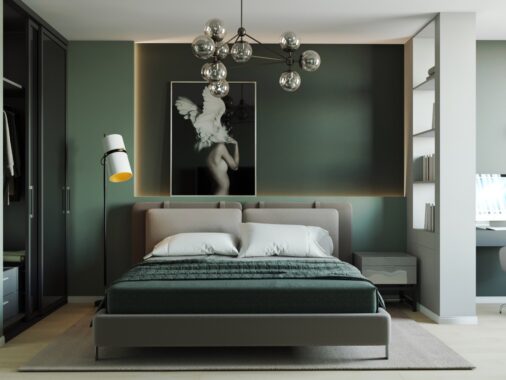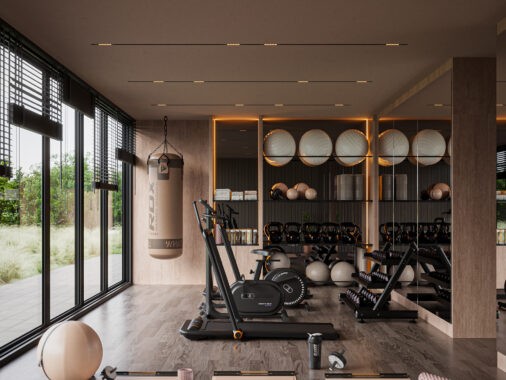In a world where change is the only constant, the way we live is evolving faster than ever. Gone are the days when people spent decades in the same home, surrounded by the same furniture. Today, more and more of us are embracing transient lifestyles—whether it’s for career opportunities, personal growth, or simply the thrill of exploring new places. This shift has given rise to a new design philosophy: nomadic furniture. Modular, portable, and adaptable, these pieces are redefining what it means to create a home, no matter where life takes you.
What Is Nomadic Design?
Nomadic design is all about adaptability. It’s furniture and decor that can easily be moved, reconfigured, or repurposed to suit different spaces and needs. Think of it as the Swiss Army knife of home design—versatile, compact, and ready for anything. This approach isn’t just practical; it’s also a reflection of a broader cultural shift toward minimalism and intentional living.
At its core, nomadic design is about creating a home that can evolve with you. It’s about investing in pieces that are as comfortable in a studio apartment as they are in a sprawling suburban house. It’s about embracing the idea that home isn’t a place—it’s a feeling.
Portable Furniture: Lightweight and Compact
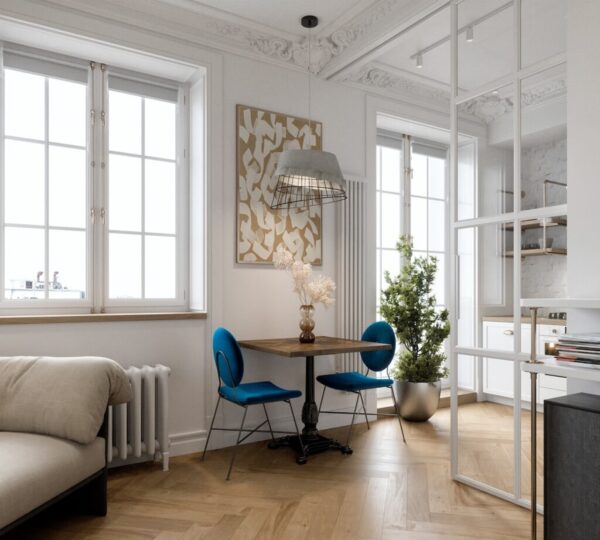
Another key aspect of nomadic design is portability. When you’re moving often, the last thing you want is a bulky, heavy piece of furniture that’s a pain to transport. Portable furniture is designed to be lightweight and easy to move, often with features like foldable legs, collapsible frames, or built-in handles.
Consider the humble folding table. It’s a staple of nomadic living because it’s so versatile. Need a dining table? A desk? A workspace for a DIY project? A folding table can do it all. And when you’re done, it can be tucked away in a closet or under a bed, taking up minimal space.
Portable furniture isn’t just practical—it’s also stylish. Designers are increasingly creating pieces that are as beautiful as they are functional. Take, for example, the Pli Side Table by designer Merve Kahraman. Made from lightweight aluminum, it folds flat for easy transport but opens into a sleek, modern side table. It’s the perfect blend of form and function.
Multi-Functional Pieces: Doing More with Less
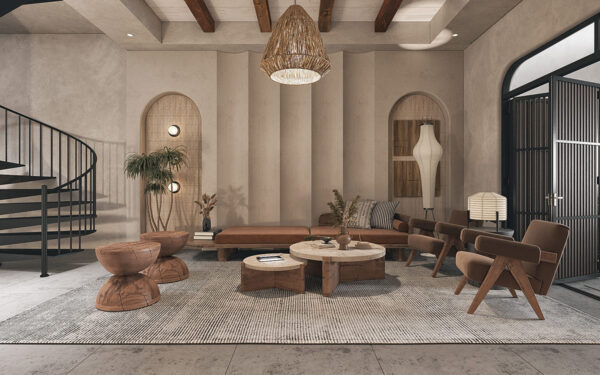
In a nomadic lifestyle, space is often at a premium. That’s why multi-functional furniture is such a big part of nomadic design. These are pieces that serve more than one purpose, helping you make the most of every square foot.
A classic example is the Murphy bed, which folds up into the wall when not in use, freeing up floor space for other activities. But multi-functional furniture goes far beyond that. There are coffee tables that transform into dining tables, ottomans with hidden storage, and even sofas that convert into bunk beds.
One of the most innovative examples of multi-functional design is the Ori system, developed by MIT’s Media Lab. Ori creates robotic furniture that can transform a single room into multiple spaces. With the push of a button, a bed can slide out of the way to reveal a desk, or a closet can shift to create a living room. It’s like having an entire apartment’s worth of furniture in one room.
Sustainable and Eco-Friendly Design
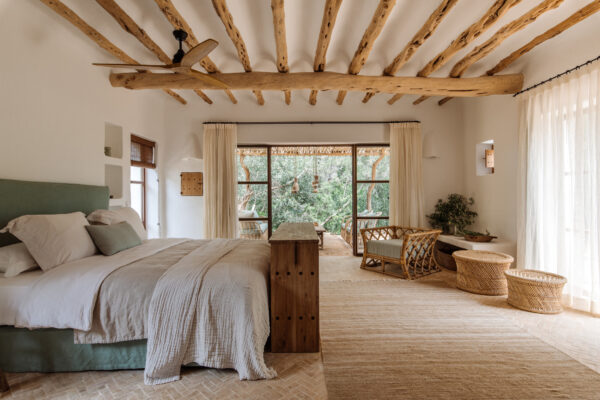
Nomadic design isn’t just about convenience—it’s also about sustainability. When you’re moving frequently, it’s easy to fall into the trap of buying cheap, disposable furniture that you end up throwing away after a few moves. But nomadic design encourages a more thoughtful approach.
Many nomadic furniture brands prioritize sustainability, using materials like reclaimed wood, recycled metal, and eco-friendly fabrics. They also focus on durability, creating pieces that are built to last. After all, the most sustainable furniture is the kind you don’t have to replace.
Take, for example, the company Floyd. Known for its modular shelving and tables, Floyd designs its furniture to be disassembled and reassembled easily, making it ideal for frequent movers. The company also uses sustainable materials and offers a buy-back program, allowing customers to return their furniture when they no longer need it.
Key Pieces of Modular Furniture for a Nomadic Lifestyle
- Murphy Beds :These classic space-savers are making a huge comeback. Modern Murphy beds fold up seamlessly into the wall, often doubling as shelves or desks when closed. Perfect for small apartments or temporary living spaces, they allow you to reclaim valuable floor space during the day.
- Modular Sofas: Think of brands like Burrow or Floyd, offering sectional sofas that can be expanded, reduced, or reconfigured based on your space. Whether you’re moving into a loft or a studio, these sofas adapt effortlessly, and you can add pieces as your needs change.
- Foldable Desks and Tables: Companies like IKEA have championed foldable designs for years, but newer brands are adding more style to the mix. Desks like the Floyd Table or compact, wall-mounted drop-leaf tables offer sturdy workspaces that can be easily packed up when it’s time to move.
- Stackable Chairs and Stools: Lightweight, durable, and easy to store, stackable seating like Herman Miller’s Eames Molded Plastic Chairs or simple metal bistro stools fit into any decor while keeping things portable.
- Expandable Dining Tables: An extendable dining table is a nomad’s best friend. Go from dinner for two to a gathering of six with a simple pull-and-lock mechanism. West Elm and Article offer beautiful options that are easy to assemble and disassemble.
- Portable Storage Solutions: Storage is a challenge for anyone, but it’s especially tricky for frequent movers. Portable storage solutions, like stackable bins, rolling carts, and foldable shelves, make it easy to keep your belongings organized and accessible. Look for pieces that are lightweight and easy to disassemble.
- Modular Shelving Systems: Systems like the String Shelving allow you to customize your storage with a mix of shelves, drawers, and cabinets. They can be easily reconfigured for different wall spaces in new homes.
- Rolling Storage Carts: Portable and versatile, rolling carts like the RÅSKOG from IKEA can be used in the kitchen, bathroom, or office and rolled into closets when not needed.
Tips for Embracing Nomadic Design
Ready to dive into the world of nomadic design? Here are some tips to help you get started:
- Start Small: You don’t have to overhaul your entire home at once. Begin with a few key pieces, like a collapsible table or a modular sofa, and build from there.
- Prioritize Quality: While it might be tempting to go for the cheapest option, investing in high-quality, durable furniture will pay off in the long run. Look for pieces made from sturdy materials that can withstand frequent moves.
- Think Multi-Functional: When shopping for furniture, ask yourself: “How many ways can I use this piece?” The more functions a piece has, the more value it will add to your space.
- Keep It Light: Opt for lightweight materials like aluminum, plywood, and fabric. These materials are easier to move and less likely to get damaged during transport.
- Embrace Neutral Tones: Neutral colors and simple designs are more versatile, making it easier to mix and match pieces as your style evolves.
- Get Creative: Nomadic design is all about thinking outside the box. Don’t be afraid to repurpose items or use furniture in unexpected ways. A stack of crates, for example, can double as a nightstand or a bookshelf.
Decor for the Nomadic Soul
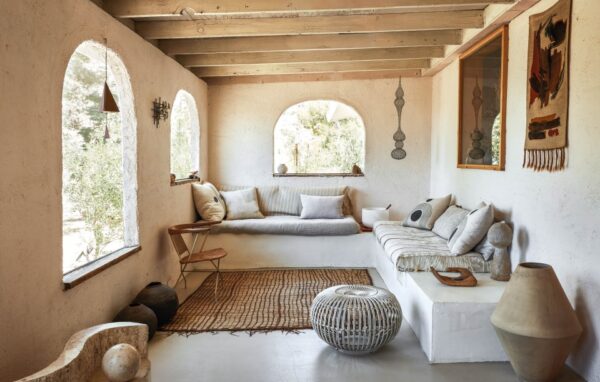
Furniture is only part of the equation when it comes to creating a home. Decor plays a huge role in making a space feel personal and inviting. But for frequent movers, traditional decor—like heavy artwork, fragile vases, and bulky rugs—can be impractical.
- Tapestries and Lightweight Wall Art: Forget heavy frames and nails. Fabric tapestries, removable wall decals, or peel-and-stick wallpapers can transform a room without permanent changes. Plus, they roll up neatly when it’s time to move.
- Portable Lighting: Rechargeable lamps and LED string lights provide ambiance without complicated wiring. Brands like Fatboy offer stylish, portable lighting options perfect for transient living.
- Collapsible Storage Bins: From canvas bins to foldable baskets, these storage solutions keep things organized and collapse flat for easy packing.
- Compact Rugs and Textiles:Rugs like flatweave kilims are lightweight, durable, and easy to fold. Throw blankets and cushions in neutral tones can refresh your decor without adding bulk.
- Small Indoor Plants :Succulents, air plants, or even portable herb gardens bring life to any space and are easy to move. Opt for lightweight pots or fabric planters to keep things manageable.
The Emotional Anchor: Why Nomadic Design Matters
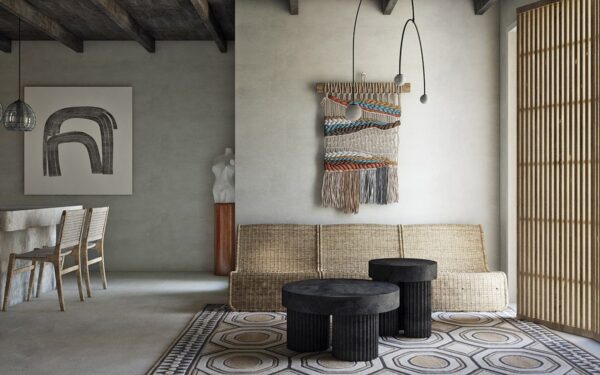
Moving frequently can be exciting, but it can also be emotionally draining. Leaving behind friends, familiar places, and routines can make it hard to feel grounded. Nomadic design isn’t just about practicality—it’s about creating a sense of stability and belonging, even when your surroundings are constantly shifting.
1. Familiarity in the Unfamiliar
When you move to a new place, everything feels foreign—the streets, the sounds, even the light coming through the windows. But when you unpack your favorite modular sofa or set up that foldable table you’ve had for years, it instantly feels like home. These pieces become emotional anchors, reminding you of who you are and where you’ve been.
2. A Sense of Control
Frequent moves can make life feel chaotic. But having furniture and decor that adapts to your needs gives you a sense of control. You’re not at the mercy of your space; your space works for you. Whether it’s a multi-functional desk that transforms into a dining table or a portable lamp that always sits by your bedside, these pieces help you create order in the midst of change.
3. Less Clutter, More Peace
Nomadic design encourages minimalism, which can be incredibly freeing. When you’re not weighed down by excess stuff, you have more mental and emotional space to focus on what truly matters. Letting go of the unnecessary—whether it’s a bulky dresser or a collection of knick-knacks—can feel like a fresh start every time you move.
4. A Connection to Your Journey
Every piece of nomadic furniture tells a story. That collapsible chair you bought for your first apartment? It’s been with you through three moves and countless late-night conversations. The modular shelving unit you assembled in your last city? It’s held your books, photos, and memories from every place you’ve lived. These pieces become a part of your journey, grounding you in your own history.
5. The Joy of Reinvention
One of the most beautiful aspects of nomadic living is the opportunity to reinvent yourself and your space. With modular and portable furniture, you can rearrange your home to reflect your current mood, needs, or aspirations. It’s like hitting the reset button on your life, but with the comfort of familiar pieces that make the transition easier.
Finishing Notes
At Home Designing, we believe that great design should be accessible to everyone, no matter where life takes them. That’s why we’re excited to see the rise of nomadic design—a trend that’s not just about furniture, but about redefining what it means to feel at home. Whether you’re moving across the country or just looking to simplify your space, these innovative pieces prove that home isn’t a place—it’s a feeling.
So, if you’re ready to embrace a more flexible, intentional way of living, explore the world of nomadic design. Visit Home Designing for more inspiration, tips, and ideas to create a home that moves with you. Because no matter where you go, your home should always feel like yours.
